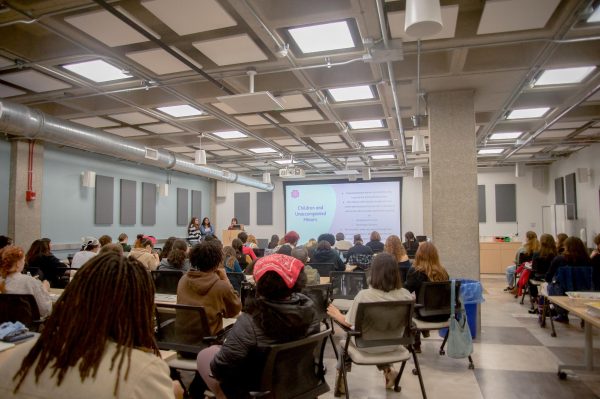Terrell’s Accomplishments Should Be Highlighted, Not Overlooked
Like any institution, Oberlin’s history and commitment to progressivism has both dramatic highs and sharp lows. Part of why I chose Oberlin as a high school student was that it was the first college to support women and Black students in pursuing higher education. As a College senior, I’ve chosen to focus my Religion capstone on Mary Church Terrell (1863-1954), because I was interested in the way our institutional history often excludes the contributions of Terrell and other Black women who graduated from Oberlin. In addition to renaming the main library after Terrell, I agree with Azariah Smith Root Director of Libraries Alexia Hudson-Ward that we should do more to educate students about her history in order for us to understand more fully what our own history is. My capstone research focuses on the intersections of Terrell’s public and private lives and how both her life experiences and political work from Oberlin onward were influenced by her devotion to social justice.
Terrell’s successes at Oberlin were impressive but also lonely — her family could not understand her intense commitment to academics, and the number of Black women who attended Oberlin alongside her was small. As a successful Black woman who boasted a higher education at the end of the 19th century, Terrell was a societal outlier — a fact she was acutely aware of. The Black women that graduated with her in the Oberlin class of 1884 also had extremely successful careers and are similarly overlooked in our institutional history. Ida Gibbs Hunt and Anna Julia Cooper went on to become nationally recognized speakers and writers who promoted civil rights and Black women’s suffrage. Cooper, Hunt, and Terrell also became lifelong friends.
Terrell responded to her acceptance into higher education by working to make education possible for everyone; she strongly believed in social uplift and the impact of education for Black communities. Not just an advocate for higher education, Terrell was a strong campaigner for kindergartens, as she recognized the need for two economic providers in many Black households. Her work was incredible in that it made Black women and their children — two of the most marginalized groups in the United States — visible by way of the National Association of Colored Women. Terrell helped found the NACW, whose main mission was to provide social services and education to Black families.
Terrell also participated in women’s suffrage and the Civil Rights Movement despite being continually undermined and excluded because of her identity. As an activist, she fought for Black women’s right to vote, their right to better working conditions, and their access to higher education through scholarships.
Most women’s activism at the time centered white women and actively discouraged conversations about race and sexual violence in the path to suffrage. While Terrell was part of these groups of women, she diverted herself by making sexual violence against Black women a significant focus of her activism. Through this activism, Terrell also made it clear to others that Black women were situated at an intersection of race and gender that made them incredibly vulnerable to sexual harm.
While there are critiques of Terrell’s ideology of “racial uplift” — an adaption of white Victorian ideology — and of her participation in politics of respectability as an upper middle-class woman, Terrell was also constrained by the avenues of social activism at the time. She was functioning in a post-slavery society where part of her work was focused on legitimizing the work itself to white society in order to gain protections for Black communities. While it is important to problematize this today, it is more meaningful to recognize that Terrell created a gateway for Black women to enter into activism, which allowed movements to become more progressive and evolve.
In other words, this institution should be proud of Mary Church Terrell, not just because of her loyalty to Oberlin, but because the incredible work she accomplished in her life fits in the nexus of the progressive politics and social activism that Oberlin inspires and promotes.
The fact that the NACW and its work are invisible in our country’s history is not for lack of the work of women like Terrell — rather, this invisibility is a direct result of the all-encompassing and prevailing influences of racism and sexism. Oberlin is a special place where we can advocate for our own alumnae and bring their accomplishments to light. Oberlin should do more work to make students aware of the leaders that have graduated from this institution and how their work has shifted our own history. There are other Oberlin graduates like her, such as Anna Julia Cooper, Ida Gibbs Hunt, and Mary Jane Patterson — the first Black woman in the U.S. to earn her BA — who were ahead of their time in regards to their impactful politics and work. All these individuals should be celebrated alongside Terrell.
Through my capstone on Mary Church Terrell, I have become more aware of the ways in which scholarship limits or hides the complexities of these women. I believe as an institution we can create more ways to explore our history in order to examine and complicate the good and the bad of our institutional history. By doing this, we can continue to uplift figures like Terrell, who are deserving yet painfully overlooked.



